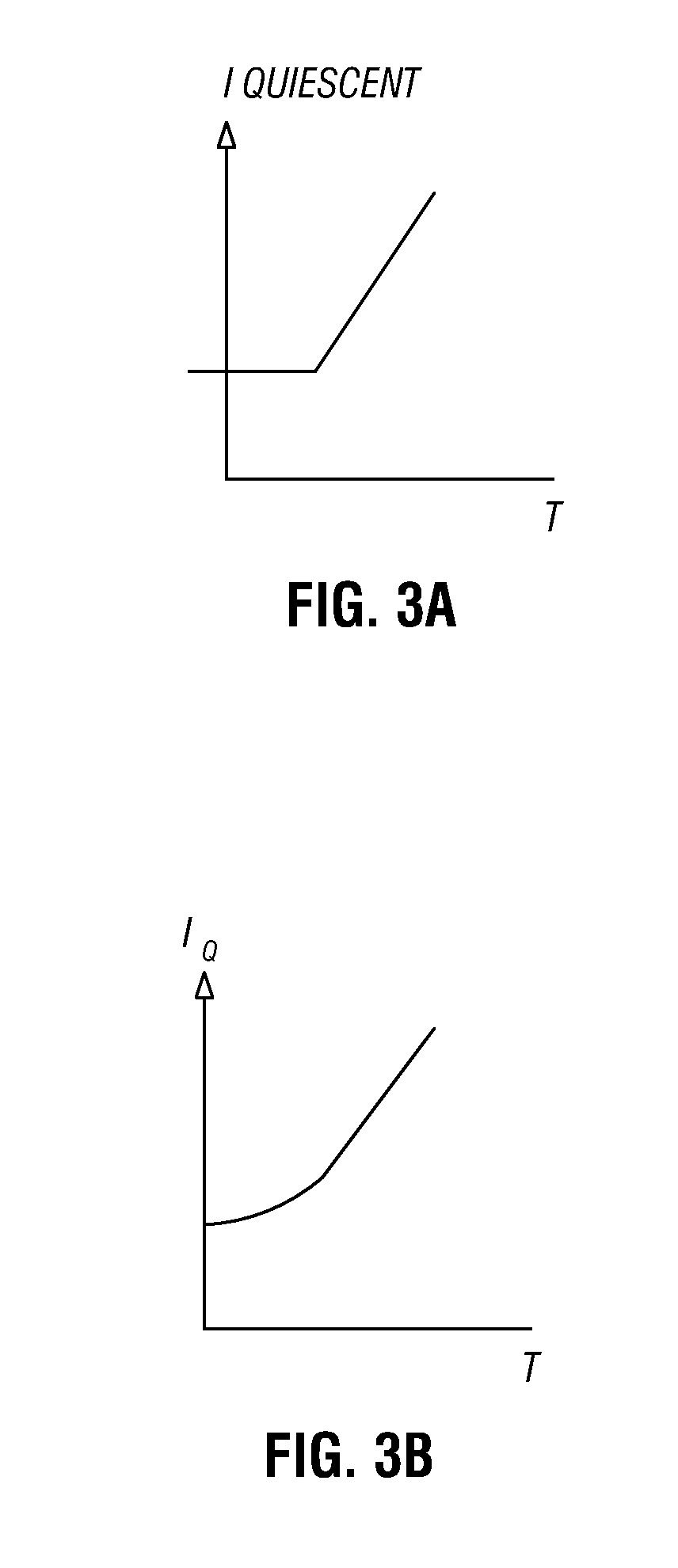Providing a temperature dependent bias for a device
a technology of temperature dependent bias and bias, which is applied in the direction of push-pull amplifiers, phase splitters, transmission, etc., can solve the problems of large gain variations of certain pas at different temperatures, negatively affecting the linearity characteristics of pa, etc., and achieves substantial linearity and reduces the variation of a gain characteristic curve
- Summary
- Abstract
- Description
- Claims
- Application Information
AI Technical Summary
Benefits of technology
Problems solved by technology
Method used
Image
Examples
Embodiment Construction
[0014]In various embodiments, a technique may provide a temperature dependent bias for an amplifier, e.g., a gain stage of a PA. By providing a temperature dependent bias, the output of the gain stage may have reduced gain variation across a temperature profile at which the device may operate, while maintaining desired gain characteristic curves which are related to linearity. Specific circuits for providing this temperature dependent bias will be discussed further below.
[0015]However, a discussion of an example amplifier and the gain variation that is possible over a temperature profile first discussed. Referring now to FIG. 1, shown is a schematic diagram of an example gain stage. In the embodiment of FIG. 1, gain stage 10, which may be one of multiple gain stages of a PA such as a complementary metal-oxide-semiconductor (CMOS) PA, may be formed of complementary pairs of metal-oxide-semiconductor field effect transistors (MOSFETs) M1-M4 configured as a differential H-bridge. As se...
PUM
 Login to View More
Login to View More Abstract
Description
Claims
Application Information
 Login to View More
Login to View More - R&D
- Intellectual Property
- Life Sciences
- Materials
- Tech Scout
- Unparalleled Data Quality
- Higher Quality Content
- 60% Fewer Hallucinations
Browse by: Latest US Patents, China's latest patents, Technical Efficacy Thesaurus, Application Domain, Technology Topic, Popular Technical Reports.
© 2025 PatSnap. All rights reserved.Legal|Privacy policy|Modern Slavery Act Transparency Statement|Sitemap|About US| Contact US: help@patsnap.com



